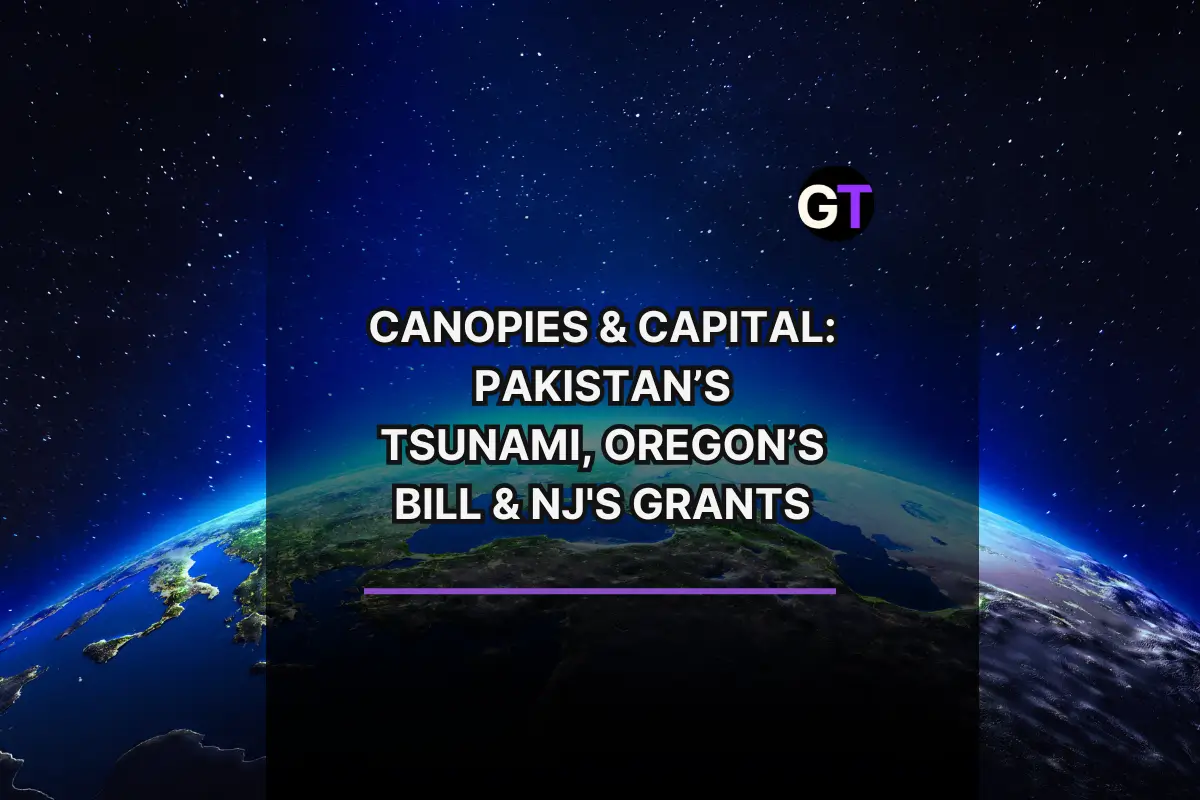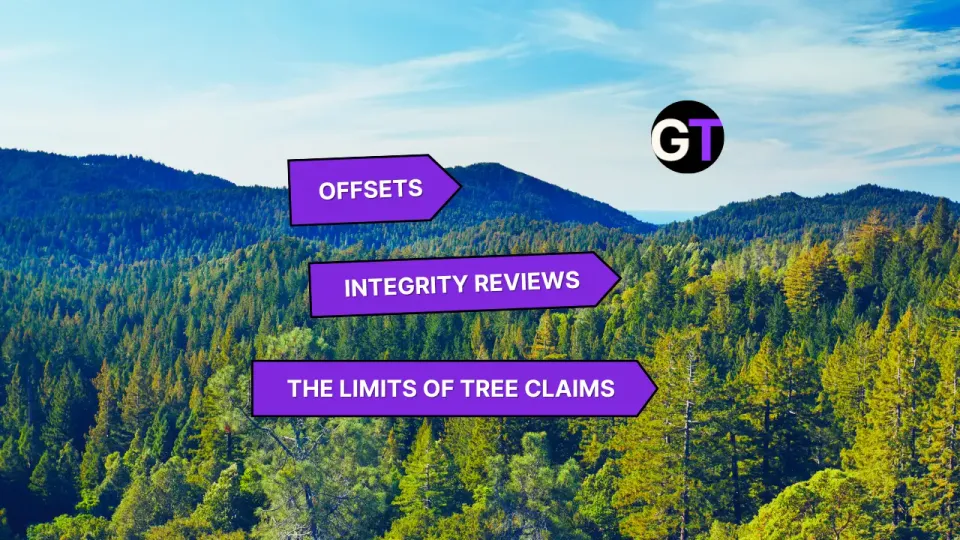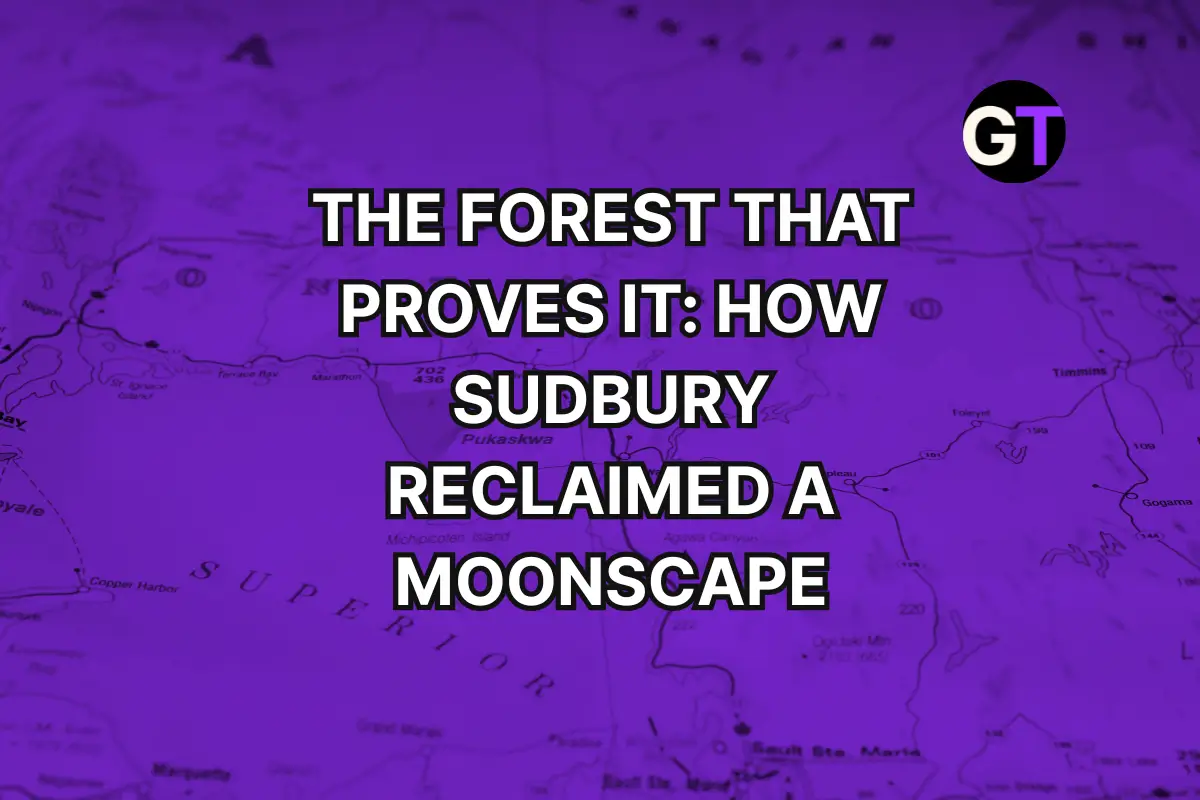Canopies & Capital: Pakistan’s Tsunami, Oregon’s Bill & NJ's Grants
From Oregon’s forest math to Pakistan’s tree blitz, nations weigh budgets, carbon credits, and ambition in the global reforestation race.

Oregon’s Forest Plan: Big Trees, Bigger Budget?
According to Oregon’s Forest Management Plan analysis, reforestation doesn’t come cheap. Under Scenario A, reforestation costs are projected at $2.04 million annually. If the state leans into Scenario B, that figure nearly triples to $5.47 million per year. The state is weighing trade-offs between ecological restoration and timber revenue, with each scenario planting thousands of acres but at a hefty financial clip.
💬 How much green is Oregon spending to go green—and is it enough to reshape reforestation at scale?
👉👉 See the full breakdown in the Oregon FMP economic analysis
Climate Cash vs. Tree Counts: Where Does Pakistan’s Billion Tree Tsunami Fit?
Pakistan’s splashy reforestation project made headlines, but when it comes to global climate finance, it’s lagging behind. Unlike Brazil and Indonesia—who built entire financial ecosystems around climate strategy—Pakistan has no climate authority, no budget tagging, and no unified investment pipeline. The result? Billions of trees, but not billions in green capital.
💬 Pakistan planted a billion trees, but without budget tagging or a climate finance authority, does it actually count in the big climate finance game?
👉👉 Read more via Inventure
CalFire Backs Tribal-Led Wildfire Resilience with $4.7M Boost
CalFire is putting $4.7 million where its wildfire strategy is—into the hands of tribal nations. Six tribes and Indigenous nonprofits will use the grants for cultural burning, land stewardship, reforestation, and fire-adaptive workforce training across public and private lands. It’s part cultural revival, part climate resilience, and 100% overdue.
💬 Could traditional ecological knowledge become California’s most underused fire defense?
👉👉 Read more via Lassen News
NJ Dangles $30M in Grants for Forests, Wetlands & Urban Trees
New Jersey just dropped a fat $30 million carrot for cities and nonprofits ready to get their hands dirty restoring forests, wetlands, and urban tree canopies. It's part of the state's "Natural Climate Solutions" push—think blue carbon (wetlands) meets green carbon (trees)—all to help Jersey hit its 2050 net-zero target. Grants up to $5M are on the table, funded by regional carbon auction cash. The catch? First-come, first-served, starting August 4.
💬 Can planting more trees and patching up marshes really soak up enough CO₂—or is this just climate PR with a splash of chlorophyll?
👉👉 Read more via Fine Day Radio
Seedlings Wanted: NM Senators Push for Nursery Expansion to Heal Burned Forests
New Mexico senators Ben Ray Luján and Martin Heinrich are teaming up with Texas Republican John Cornyn on a bill that would unlock federal funds for expanding tree nurseries—money that’s already sitting in the Bipartisan Infrastructure Law but is currently barred from funding physical infrastructure. The move could be a game-changer for habitat restoration in a state where post-wildfire landscapes are desperate for seedlings. Case in point: the Mora-based John T. Harrington Forestry Research Center produces just 300,000 seedlings annually, but needs to scale up to 5 million to meet restoration demands. Spoiler: New Mexico's forests are short by as many as 390 million seedlings.
💬 Can better funding for seedling nurseries bridge the gap between billion-dollar legislation and boots-on-the-ground reforestation?
👉👉 Read more via Source NM
Should Forests Be a Profit Center? DENR Courts Corporations for Carbon-Driven Reforestation
The Philippine government is calling on big business to treat forest restoration not as charity, but as investment. In a fresh MOU with the Ayala Group, the DENR launched the “Forests for Life” campaign—aiming to plant 5 million native trees by 2028 across six watersheds, all while producing high-integrity carbon credits ripe for market trading. Environment Secretary Raphael Lotilla pitched the initiative as both ecological duty and economic strategy, hinting at the country’s potential to become a global carbon hub.
💬 Can privatized reforestation balance profit motives with planetary stewardship—or is nature just becoming the next line item on a corporate balance sheet?
👉👉 Read more via Insider PH
Timber vs. Carbon Credits: Can America’s Forests Serve Both?
America’s forests are now the battleground between a $288 billion timber industry and a rapidly growing carbon credit market projected to hit $250 billion by 2050. Startups like Aurora Sustainable Lands and Chestnut Carbon are buying millions of acres to lock away CO₂ and sell offsets, while rural economies tied to timber worry about shrinking harvests and mill closures. Some experts see a future where “smart” timber companies stack carbon credits on top of lumber sales, but with U.S. forests valued at $150 trillion globally, the stakes are high: can one landscape deliver both planks and planetary insurance?
💬 Can America’s forests keep sawmills humming and bankroll a carbon market without splintering under the pressure?
👉👉 Read more via TIME
Who Should Foot the Bill for ESG’s Data Backbone?
Corporate ESG claims lean heavily on tools like Global Forest Watch Pro and Vessel Viewer, but these platforms were built and bankrolled by nonprofits and philanthropy—not the corporations now using them for compliance and brand credibility. As reliance grows and regulatory mandates loom, developers face a high-stakes question: can they shift to sustainable funding models without compromising the transparency and independence that make them trusted in the first place?
💬 If the private sector is profiting off ESG credibility, should they finally start paying for the infrastructure that props it up?
👉👉 Read more via SSIR
NEST Drops $750M into Timberland—Will This Climate Bet Yield More Than Just Green Kudos?
UK pension giant NEST is planting serious cash—$750 million—into timberland across the Americas via BTG Pactual Timberland Investment Group. It’s the second forestry-focused move by the £50bn fund in two years, following its 2023 tie-up with Campbell Global. BTG Pactual TIG brings 2.6 million acres and $7.3 billion in assets to the table, promising sustainably managed forests and “respectful” community engagement.
💬 NEST says it’s all about diversifying the portfolio while aligning with climate goals—but at this scale, can timberland truly deliver financial returns and environmental impact, or is it just climate virtue with a yield curve?
👉👉 Full story via IPE Real Assets
New Zealand’s Carbon Credit Cutback: Climate Fix or Forest Flop?
New Zealand’s grand tree-planting-for-carbon-credits experiment is hitting the brakes. After a carbon boom fueled by radiata pine plantations and lucrative emissions offsets, the government is scaling back forest-based NZUs amid backlash from farmers, fire-prone forests, and policymakers worried about locking up land for decades. Turns out, planting monocultures for carbon (and cash) isn’t the climate silver bullet it was hyped up to be. A new report calls for a rebalancing—think more native species, better forest management, and a reality check on the long-term liabilities of carbon markets. Because when your net-zero strategy starts choking out food production and biodiversity, it might be time to prune.
💬 Is this a course correction or a cautionary tale for carbon markets?
👉👉 Read the full article on Substack from Alice Palmer

Edited by Chris Harris

This work is licensed under a
Creative Commons Attribution 4.0 International License.





